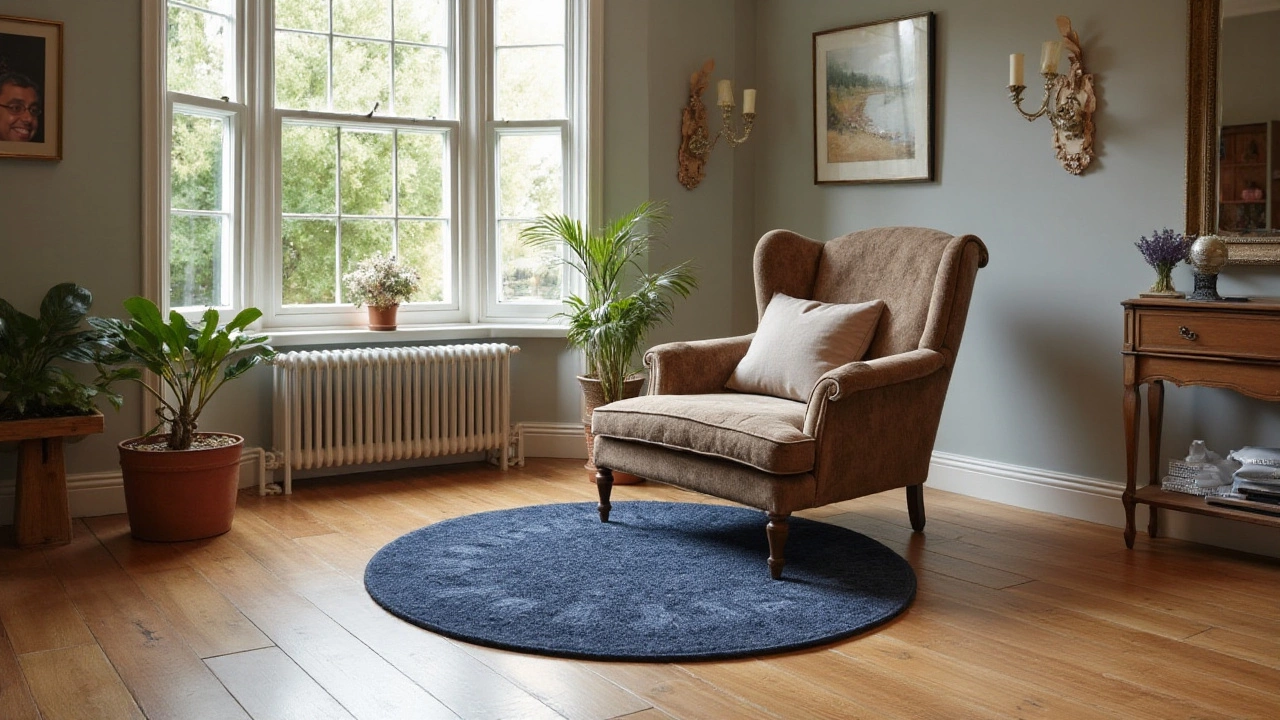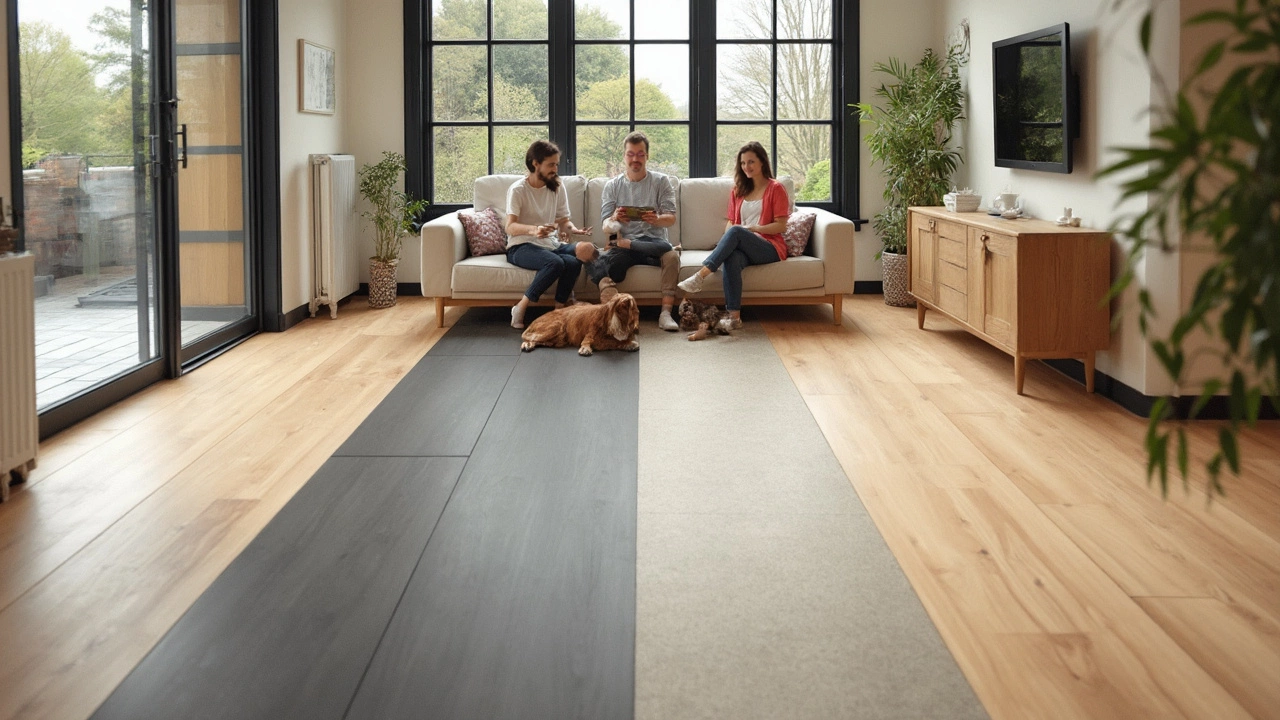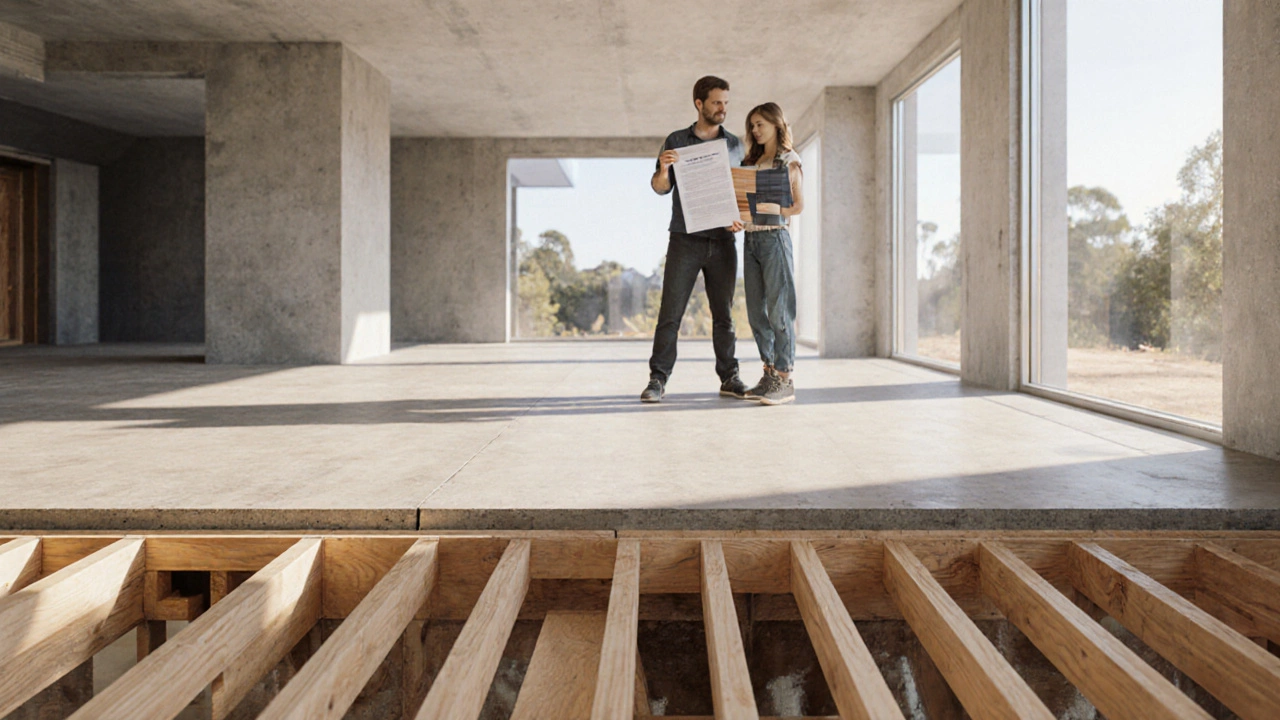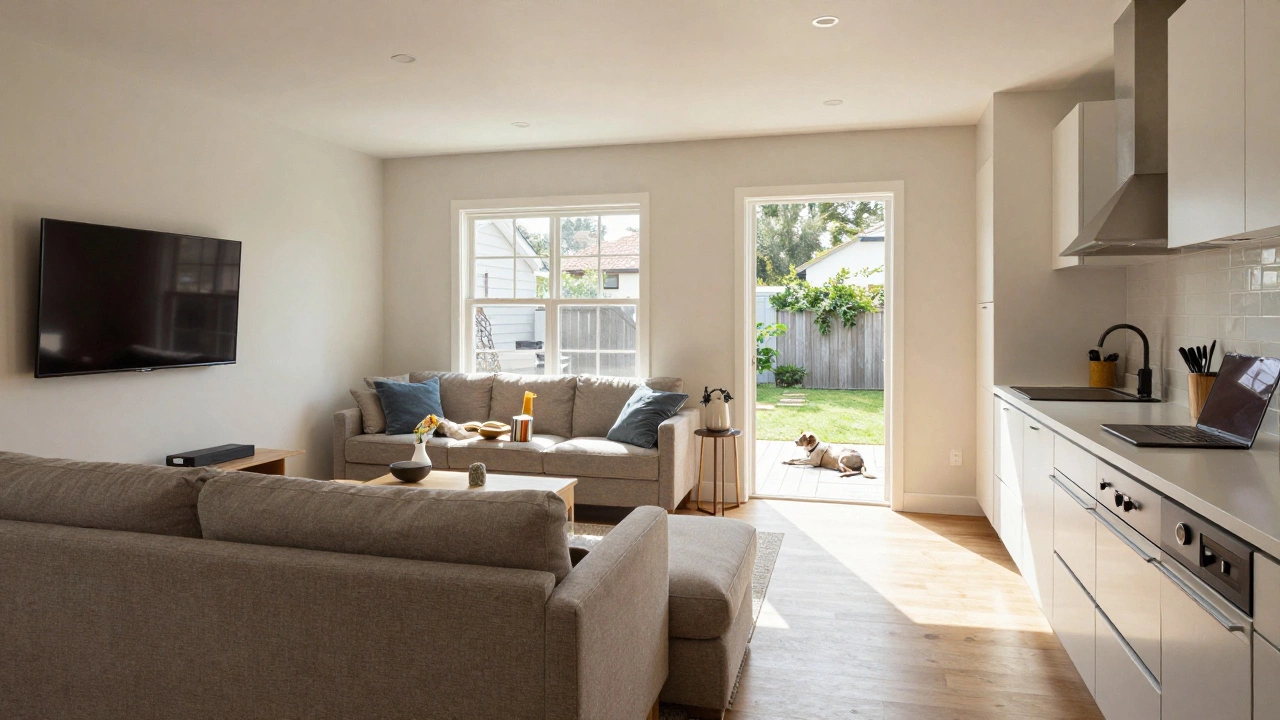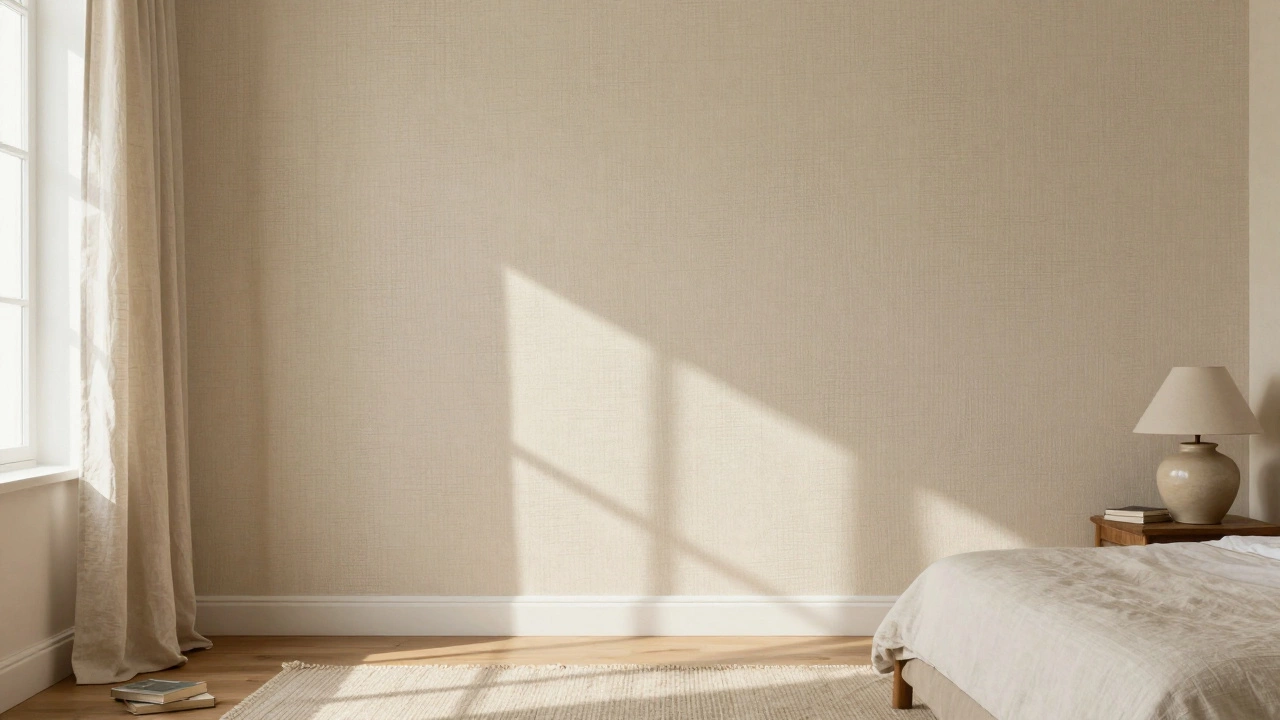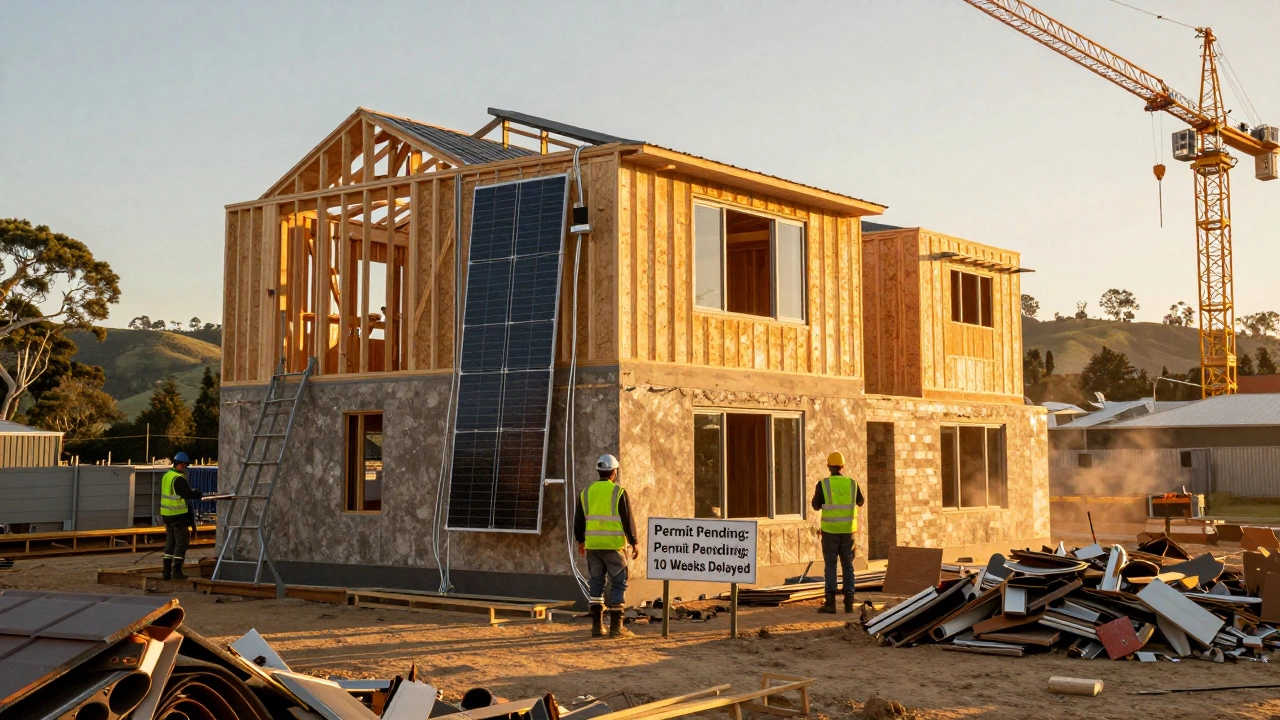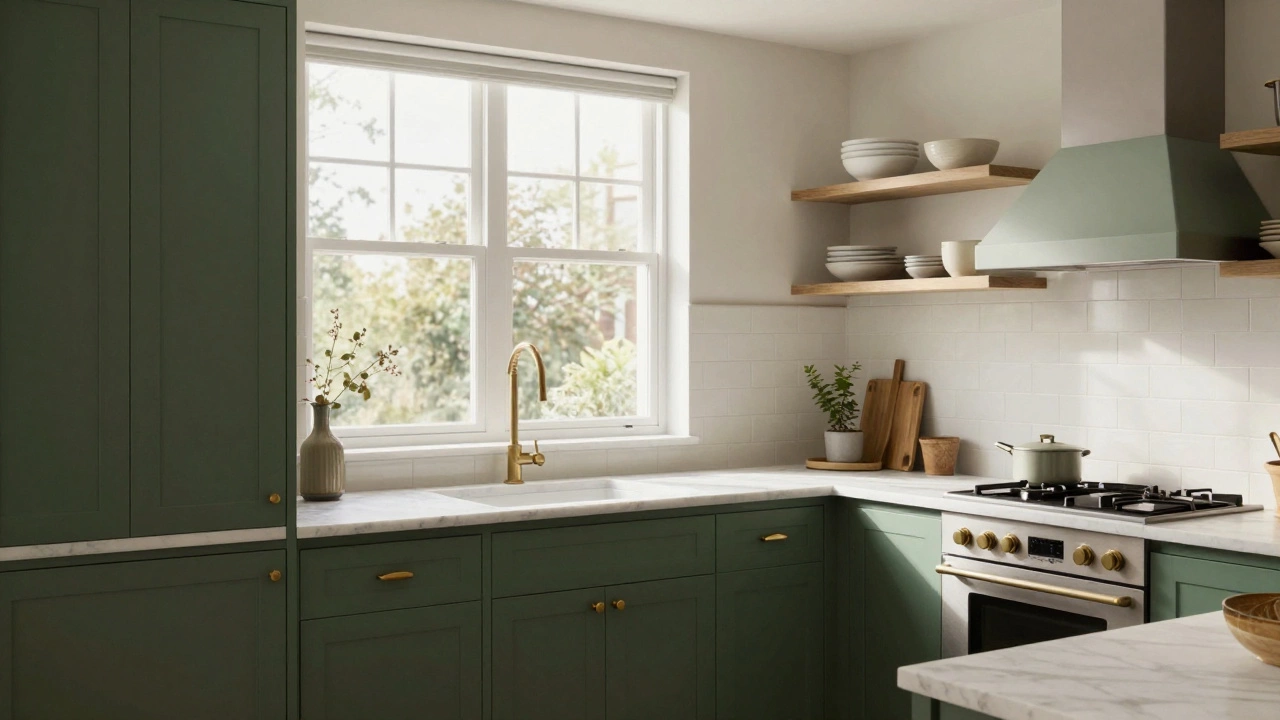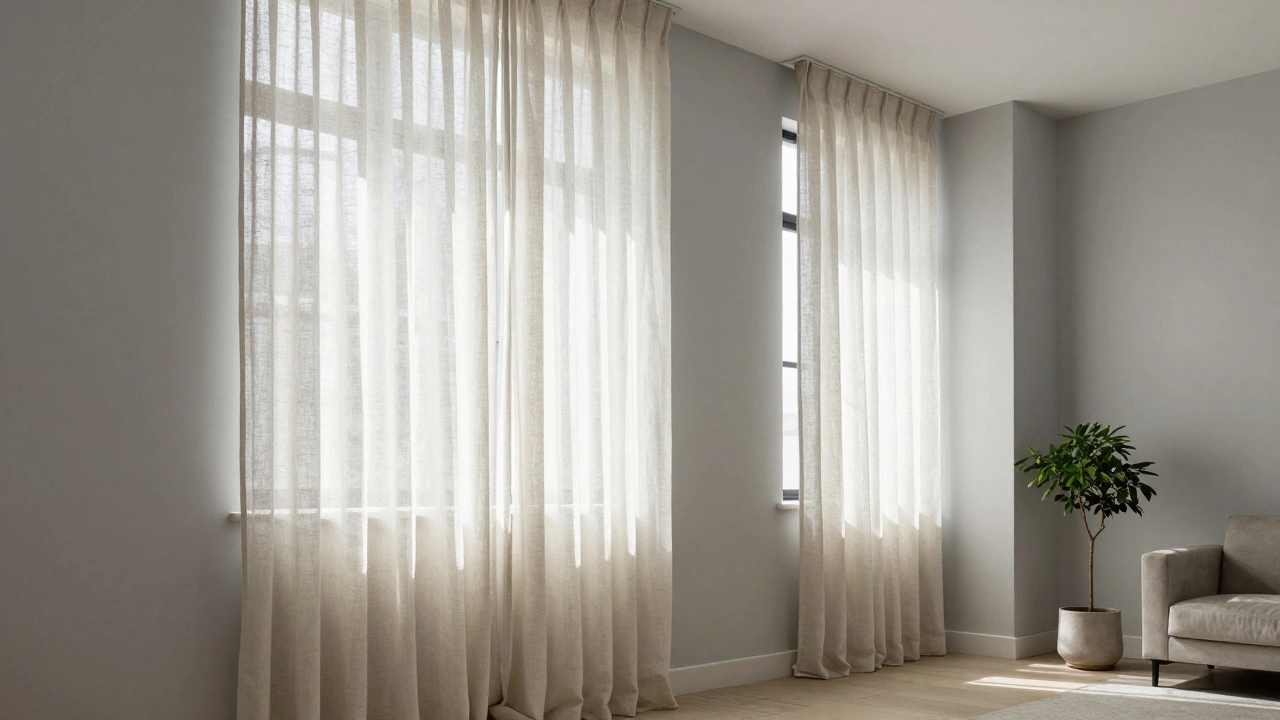Choosing the right flooring for your home isn't just about aesthetics; it's about finding a balance between style, durability, and budget. Flooring is a foundational element that affects the ambiance and functionality of your space, so it's worth giving it some serious thought. Whether you're drawn to the timeless elegance of hardwood or the modern versatility of vinyl, each type has its unique charm and benefits.
In the ever-evolving world of home design, the options can seem overwhelming. But with a little guidance, narrowing down the choices becomes a much easier task. Today, we'll explore various flooring materials, weigh their pros and cons, and consider the best use cases for each. With insider tips and facts, you'll be equipped to make an informed decision that suits your lifestyle and design preferences perfectly.
- Understanding Flooring Types
- Pros and Cons of Common Materials
- Best Flooring for High Traffic Areas
- Eco-Friendly and Sustainable Options
- Maintenance Tips for Longevity
Understanding Flooring Types
When it comes to selecting flooring options, the choices are vast and varied, each presenting a unique set of characteristics. One of the most popular options is hardwood, known for its timeless appeal and durability. Hardwood floors are crafted from solid wood, giving them a robust and warm presence in any room. They come in various types of wood, like oak, maple, and walnut, each offering its distinct grain patterns and colors. While they can add significant elegance to a space, hardwoods are sensitive to moisture and can be prone to scratching, making them more suited to areas like living rooms or bedrooms rather than kitchens and bathrooms.
Another choice worth considering is laminate flooring, which mimics the look of wood, stone, or tile at a fraction of the cost. It's created by compressing layers of fiberboard and has a photographic applique layer under a clear protective layer. This gives it a realistic wood appearance, and its resistance to scratches and dents makes it a practical choice for families with pets or children. However, one must be cautious with water exposure since it can warp or damage the material over time.
"In choosing between these materials, weigh not only their aesthetic appeal but their functional impact on the space." - Jane Doe, Interior Designer
The rise in popularity of vinyl flooring can't be overlooked either, especially with luxury vinyl tiles (LVT) hitting the market. Vinyl is resilient, waterproof, and highly durable, ideal for high-traffic areas or rooms like kitchens and bathrooms. It is available in a wide range of designs, even convincingly resembling wood, tile, and stone. Its easy maintenance has won over many homeowners who prefer a fuss-free approach. However, some vinyl products can emit volatile organic compounds (VOCs), impacting indoor air quality, so opting for low-VOC products is recommended.
For those with sustainability in mind, bamboo flooring provides an eco-conscious option. Bamboo is technically a grass, but its processed form for flooring is exceptionally hard and durable. It's a renewable resource that grows much faster than trees. Bamboo floors offer a unique aesthetic with linear patterns and can be a conversation starter in modern homes. While it’s highly durable, exposure to moisture should be monitored as it can cause the floor to expand. Thus, it stands as a compelling choice for living rooms and bedrooms.
The choice of home flooring can also expand to the realm of ceramic tiles, prominently used for centuries. Ceramic tiles can be glazed or unglazed and come in myriad colors and patterns, suiting just about any design preference. They're particularly favored in bathrooms or kitchens due to their water resistance and longevity. Nevertheless, they can feel cold underfoot in winter, so incorporating radiant heating can greatly enhance comfort. Tiles can also be slippery when wet, hence choosing slip-resistant varieties is wise.
Below is a simple comparison table that compares the durability, cost, maintenance, and ideal areas of use for different flooring types:
| Flooring Type | Durability | Cost | Maintenance | Ideal Areas |
|---|---|---|---|---|
| Hardwood | High | High | Moderate | Living Room, Bedroom |
| Laminate | Medium | Low | Low | Living Room, Hallway |
| Vinyl | High | Medium | Low | Kitchen, Bathroom |
| Bamboo | Medium-High | Medium | Moderate | Living Room, Bedroom |
| Ceramic Tile | Very High | Medium | Low | Kitchen, Bathroom |
Pros and Cons of Common Materials
When considering flooring options for your home, it's essential to weigh the strengths and weaknesses of each material. Hardwood, for instance, is renowned for its timeless appeal and long-term durability. This material adds a sense of warmth and natural beauty to any space. On the downside, hardwood can be expensive and isn't the best choice for moisture-prone areas like bathrooms. Regular maintenance with sanding and refinishing might also be necessary to keep your floors looking pristine over the years.
Tile flooring, on the other hand, offers incredible versatility with materials like ceramic, porcelain, and stone. Its durable nature makes it a favorite choice for kitchens and bathrooms where water is a primary concern. However, tile can be cold and hard underfoot, requiring additional mats or rugs for comfort. Installation can be labor-intensive, contributing to higher upfront costs. Still, its resistance to water damage often outweighs these drawbacks, making tile a go-to for many homeowners.
For those seeking budget-friendly options, consider vinyl or laminate flooring. These materials have improved significantly over the years and can mimic the appearance of more expensive surfaces beautifully. Vinyl is especially favored for its water-resistant qualities, making it ideal for basements and laundry rooms. Laminate, in contrast, offers a vast array of styles and is easy to install. However, it might not fare well in high-moisture areas, and neither option matches the longevity or resale value of natural materials.
"Choosing the right type of flooring depends on your individual needs and the function of the room," says Jeff Wilson, an expert in residential remodeling. "It's important to consider factors like maintenance, durability, and aesthetics."
Bamboo and cork are emerging as eco-friendly flooring choices, appealing for their sustainable harvesting and unique aesthetics. Bamboo offers a clean, modern look with firmness comparable to traditional hardwood, while cork provides a soft, cushioned feel. Both materials require careful maintenance to avoid scratches and dents, especially in high-traffic areas. However, their environmental benefits and unique textures have many opting to go green with these options.
Choosing your home's flooring is an exciting venture, but it does require some thoughtful consideration. Below, you'll find a quick comparison chart that might help streamline your decision-making process:
| Material | Pros | Cons |
|---|---|---|
| Hardwood | Durable, timeless, good resale value | Costly, maintenance-heavy |
| Tile | Water-resistant, durable | Cold, hard to install |
| Vinyl | Affordable, water-resistant | Less durable |
| Laminate | Cost-effective, easy to install | Not moisture-friendly |
| Bamboo | Eco-friendly, modern | Prone to scratches |
| Cork | Sustainable, comfortable | Requires sealing |
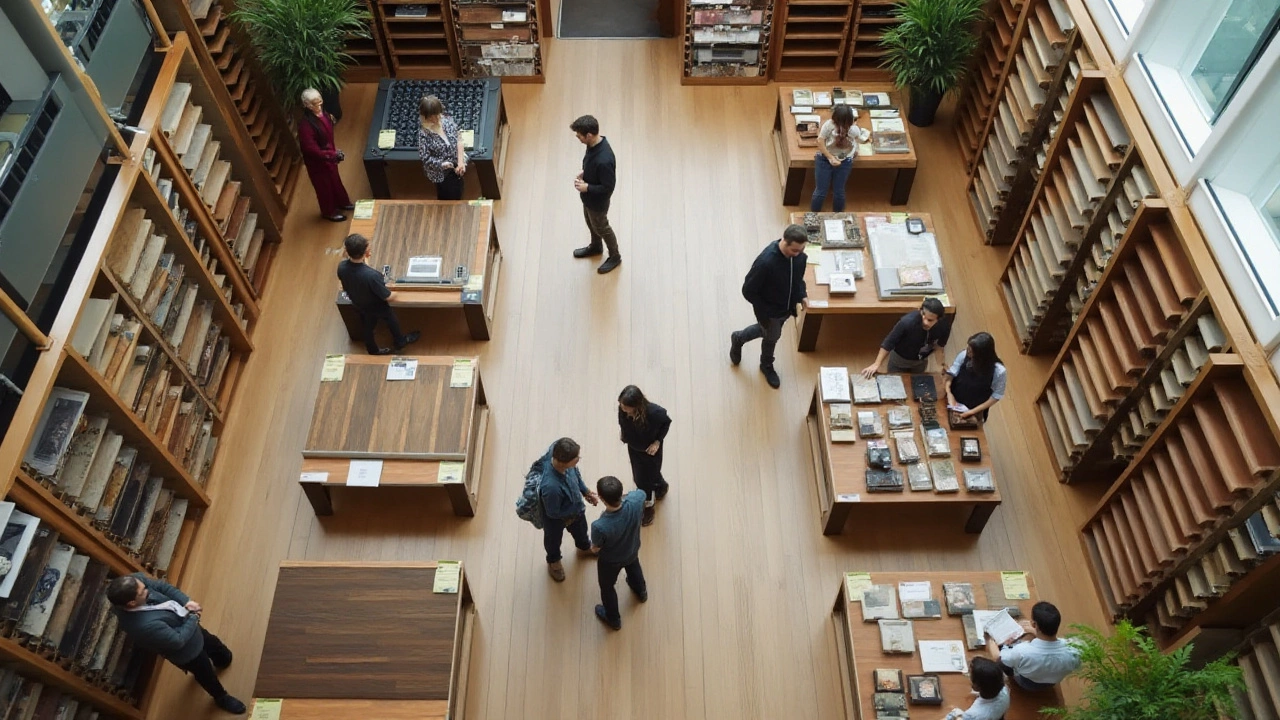
Best Flooring for High Traffic Areas
When it comes to high traffic areas like hallways, kitchens, and entryways, choosing the right flooring options is crucial to ensure longevity and ease of maintenance. These areas endure a constant hustle and bustle, and the best flooring should offer durability without sacrificing style. One stellar option is ceramic tile, known for its incredible resilience against foot traffic. Unlike softer materials, ceramic tile is impervious to scratches and dents making it a go-to choice for bustling spaces.
Next in line, luxury vinyl planks have surged in popularity thanks to their durability and aesthetic versatility. This best flooring contender is water-resistant, which is especially beneficial in kitchens or mudrooms where spills are frequent. Moreover, the advancements in technology have allowed luxury vinyl to mimic the look of natural materials like wood and stone quite convincingly, giving homeowners the flexibility to match the flooring with their existing decor without breaking the bank.
Hardwood flooring, though traditionally not associated with high traffic areas, has modern solutions that make it a viable candidate. Engineered hardwood offers the elegance of natural wood with added stability from its layered construction. This makes it less susceptible to warping—a common concern in high moisture or high traffic zones. Careful selection of wood species, like oak or hickory, can also improve durability due to their inherent hardness. Statistically speaking, oak is among the top three choices in Australia for homes that demand both class and endurance.
"The beauty of today’s flooring market is that durability no longer means compromising on design," says Karen Leven, a notable interior design expert. "Many homeowners are delighted to find tough options that meet their aesthetic aspirations."
Another strong contender in the land of durable floors is laminate. Often thought of as a budget choice, laminate technology has progressed immensely over recent years, providing a scratch-resistant surface that can withstand daily wear and tear. It’s important to choose a high AC rating laminate for such areas to ensure it stands the test of time. With textured surfaces, modern laminates can offer an astonishingly authentic look at a fraction of the cost.
Finally, for those prioritizing eco-friendly selections, bamboo flooring is an option that combines sustainability with toughness. Bamboo is naturally harder than many hardwoods and regenerates quickly, making it a wonderful choice for environmentally-conscious homeowners. It's a fantastic blend of durability, beauty, and minimal environmental impact, appealing to those who want to tread lightly both as they walk upon their floors and in their carbon footprint.
Eco-Friendly and Sustainable Options
As the world increasingly emphasizes sustainable living, the demand for eco-friendly flooring options has grown significantly. Choosing such materials not only helps reduce your carbon footprint but also ensures a healthier environment within your home. Among these options, bamboo and cork are frontrunners due to their rapid renewability and minimal environmental impact. Bamboo, often mistaken for a type of wood, is actually a fast-growing grass that can be harvested every 3-5 years. This makes it a sustainable alternative to traditional hardwood floors, which can take decades to mature. Similarly, cork is harvested from the bark of the cork oak tree, which regenerates itself without harm. This process allows for sustainable production without deforestation.
Apart from their sustainability, both bamboo and cork boast aesthetic appeal and durability comparable to more conventional flooring types. Bamboo offers a sleek and modern look with natural variations of color and grain that bring warmth and character to any room. In contrast, cork has unique qualities such as softness underfoot and a natural ability to muffle sound, making it a great choice for play areas or workspaces. Both materials are relatively easy to maintain, needing only regular sweeping and occasional mopping. To increase their longevity, it's advised to place protective pads under furniture and address spills promptly to avoid stains.
Beyond bamboo and cork, there are other innovative eco-friendly flooring choices making waves, such as reclaimed wood and recycled metal tiles. Reclaimed wood floors repurpose wood from old structures, giving it new life while maintaining its charm and historical character. This option not only preserves forests but also indulges in a rustic elegance that's hard to replicate. On the other hand, recycled metal tiles offer a modern and industrial look. Made from materials such as aluminum and copper, these tiles are perfect for contemporary home settings. While more niche, they're testament to the creativity at play in the realm of sustainable flooring.
A report by the World Green Building Council noted, 'Choosing sustainable materials can reduce environmental impact and even enhance well-being through indoor air quality.'
For those who prioritize eco-friendliness and want flooring that aligns with green principles, many suppliers now provide certifications to ensure the materials' origins and manufacturing processes meet environmental standards. Certifications such as the Forest Stewardship Council (FSC) and the Sustainable Forestry Initiative (SFI) are good indicators of responsible sourcing. Additionally, opting for local suppliers can significantly reduce the carbon footprint associated with transportation, thereby broadening your support for community businesses.
Deciding on eco-friendly flooring is not just a trend; it is a step toward ensuring a sustainable future. While the initial cost of sustainable flooring can be higher, the environmental benefits and long-term savings on maintenance often outweigh the investment. As society progresses towards more sustainable living practices, our interior design choices, including flooring, play a substantial role in demonstrating our commitment to the planet.
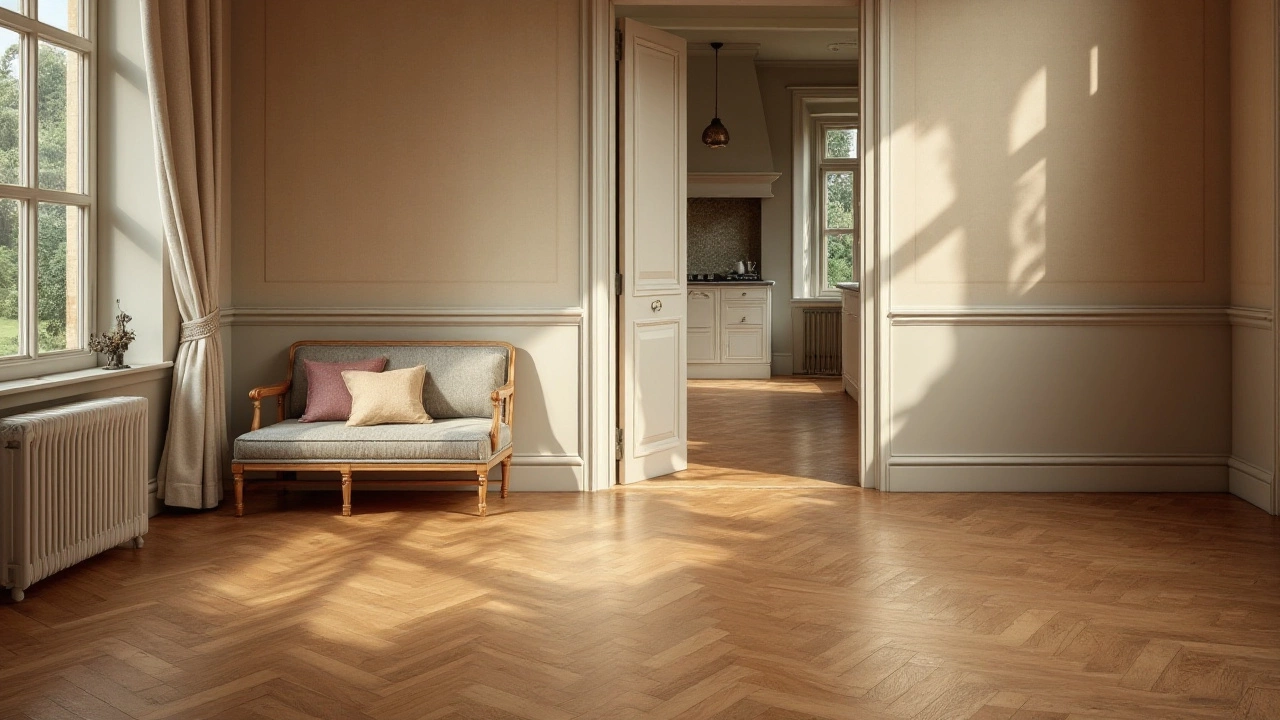
Maintenance Tips for Longevity
Ensuring the longevity of your flooring involves more than simply choosing the right materials; it's also about proper care and consistent maintenance. Any flooring, no matter how durable, will require attention to retain its beauty and functionality over time. Let's delve into some essential maintenance tips to keep your floors in tip-top condition. Regular cleaning is a paramount rule for all types of floorings. For hardwood, using a damp mop or a microfiber cloth is best, as excess water can cause wood to warp or stain. If you have carpets, frequent vacuuming helps remove dirt particles that can wear down fibers and extend the life of the carpet. As for tiles, a mild detergent solution and a soft-bristled brush often do the trick to prevent grimy buildup.
Preventive measures can also significantly affect how well your flooring stands the test of time. Protecting high-traffic areas with rugs or mats can mitigate wear and tear. For instance, placing a sturdy doormat by every entrance can catch dirt before it scatters all over your home, acting as a first line of defense. In living areas with heavy furniture, using felt pads can help avoid scratches, especially on hardwood and laminate. Speaking of furniture, it's wise to occasionally rearrange large pieces to allow even distribution of weight and faded spots from the sun. "Prevention is often better than cure," says interior designer Amber Lewis, highlighting the importance of early action.
Aside from everyday care, periodic deep cleaning is essential for maintaining the pristine quality of your home flooring. At least once a year, consider hiring professionals to steam clean carpets or deep polish wooden floors. The investment in professional care can extend the life of your floors exponentially, particularly for neglected areas where dirt accumulates. Another important aspect is addressing damages swiftly. Whether it's a loose tile, a scratched plank, or a stained carpet, prompt repairs prevent small issues from ballooning into major problems. For individuals adopting eco-friendly lifestyles, using green cleaning products can further enhance maintenance without harming the environment.
A critical yet often overlooked factor is ventilation. By ensuring proper airflow, you can prevent mold and mildew, particularly in humid areas that include bathrooms and kitchens. The circulation helps in keeping the flooring dry and clean. As a bonus, well-ventilated rooms often enjoy a fresher atmosphere, contributing to the general well-being of inhabitants. When it comes to humidity control, investing in dehumidifiers can be a game-changer, particularly for properties susceptible to dampness. Armed with these flooring ideas, you'll know how to treat your floors well, ensuring they stay in their best form for years to come.

